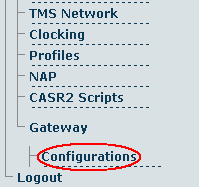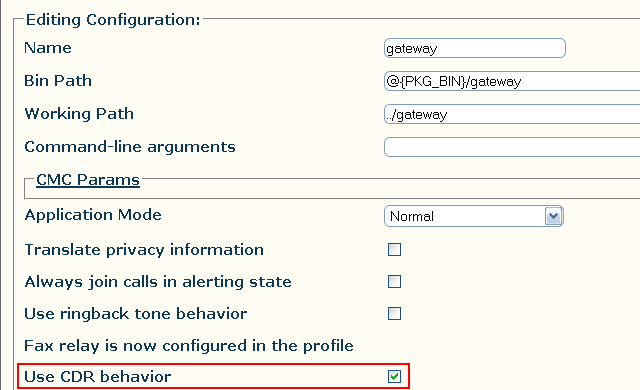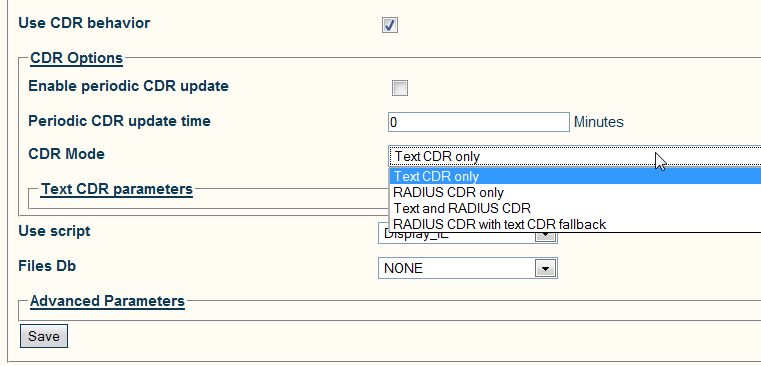|
|
| Line 30: |
Line 30: |
| | | | |
| | [[Image:RADIUS_v2_5_gw_cfg_success.png|border]] | | [[Image:RADIUS_v2_5_gw_cfg_success.png|border]] |
| − |
| |
| − | <br><br>
| |
| − | '''''Configuring RADIUS'''''
| |
| − | ----
| |
| − | * RADIUS requests will be sent from the TMG management port (mgmt0) or from the [[Virtual IP Interfaces|Virtual IP Interfaces]] if they are configured.
| |
| − |
| |
| − |
| |
| − | 1- Select '''RADIUS''' from the navigation panel.
| |
| − |
| |
| − | [[Image:Radius_Config_left_panel.jpg|border]]
| |
| − |
| |
| − |
| |
| − | 2- In the '''Editing RADIUS client configuration''' page, you can modify some general parameters:
| |
| − | *'''Timezone''' will use the local timezone or the GMT timezone in the CDR records
| |
| − | *'''Time format''' describes how to display the time in human readable format in the CDR records. This is based on the [http://php.net/manual/en/function.strftime.php strftime function]
| |
| − | *In Advanced Parameters you have:
| |
| − | **'''Maximum accounting concurrent records''' is the maximum number of simultaneous accounting records to be sent to the RADIUS servers. This improves the RADIUS performance of the system: it allows the RADIUS client to deal with servers that have high latency relative to the number of request/responses per second to be achieved. Default value is 10 records.
| |
| − | **'''Maximum accounting queued records''' is the maximum number of accounting records to queue when the maximum number of pending records has been reached. When the maximum number of queued messages is reached, CDR records will be dropped. To prevent this, make sure the system supports [[CDR redundancy|CDR redundancy]]. Default value is 12000 records.
| |
| − | ** Click '''Save''' to save your changes.
| |
| − |
| |
| − | [[Image:Radius_client_configuration_empty.jpg|border]]
| |
| − |
| |
| − | <br><br>
| |
| − | '''''Configuring RADIUS Servers'''''
| |
| − | ----
| |
| − | Multiple RADIUS servers can be configured to achieve redundancy.
| |
| − |
| |
| − | 2- Select '''Create New RADIUS Server''' to add additional RADIUS servers.
| |
| − | * Configure the RADIUS server with these parameters:
| |
| − | **'''Name''' to recognize the server
| |
| − | **'''RADIUS server address and port''' is the IP address and port of the RADIUS server we want to access. The format is x.x.x.x for the IP and you can add the port with a colon if it is different than the default port 1813 (for example 10.10.10.10:12345)
| |
| − | **'''RADIUS timeout''' is the request timeout in milliseconds for each request to this server.
| |
| − | **'''RADIUS retries''' is the number of retries the RADIUS client will try before falling back to other methods. See full details on functionality here: [[CDR redundancy|CDR redundancy]]
| |
| − | **'''Server secret''' is the passphrase to authenticate the TMG on the RADIUS server.
| |
| − |
| |
| − | [[Image:Radius_client_configuration.jpg|border]]
| |
| − |
| |
| − |
| |
| − | 3- You can configure multiple RADIUS servers to have RADIUS redundancy. Each entry can have different timeouts and retries.
| |
| − |
| |
| − | [[Image:Radius_Configuration_2_6.jpg|border]]
| |
This page describes how to enable and configure a TMG system to capture CDRs, using a RADIUS server.
Enabling RADIUS


